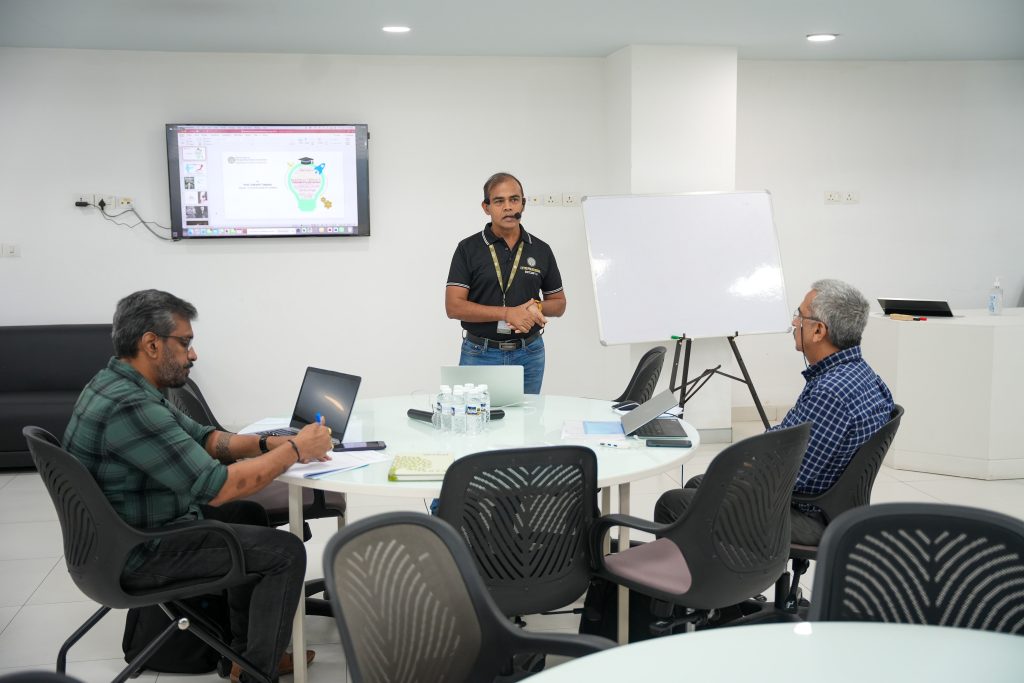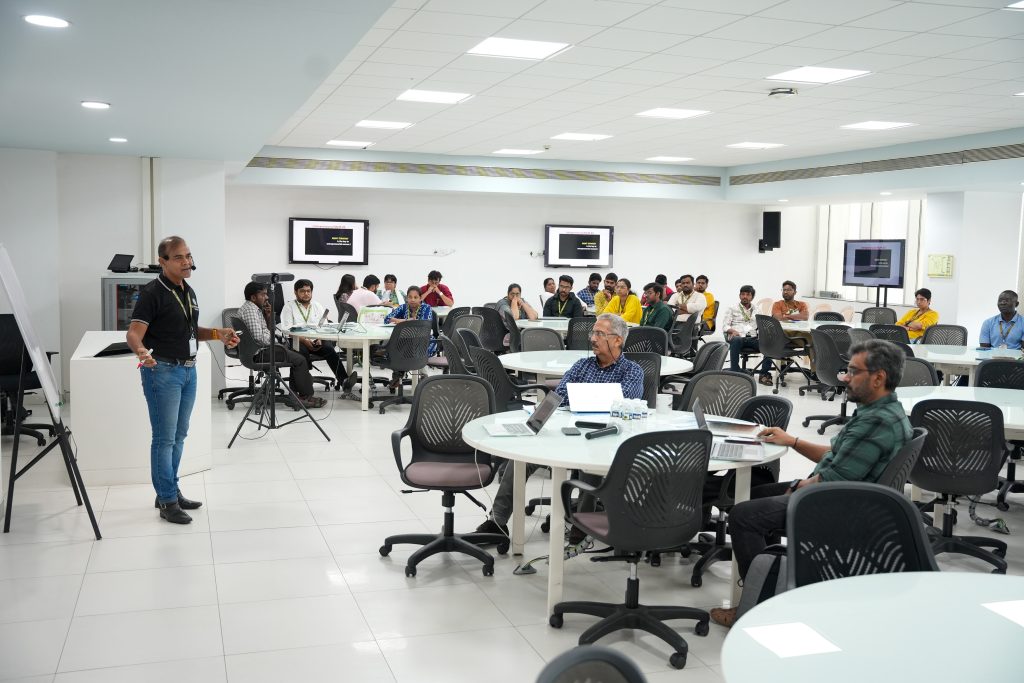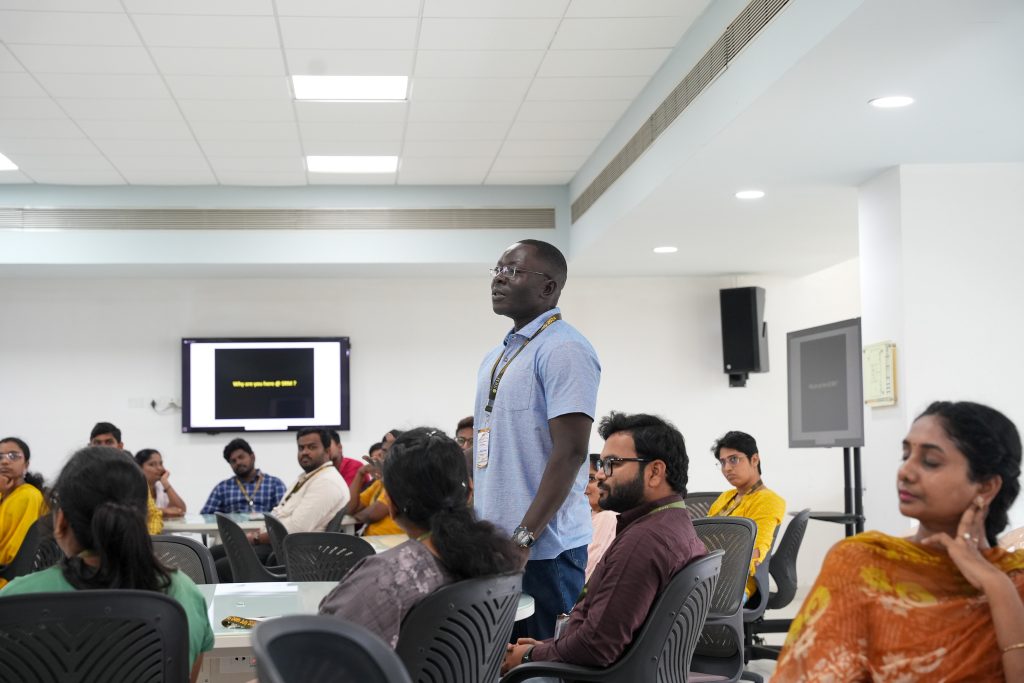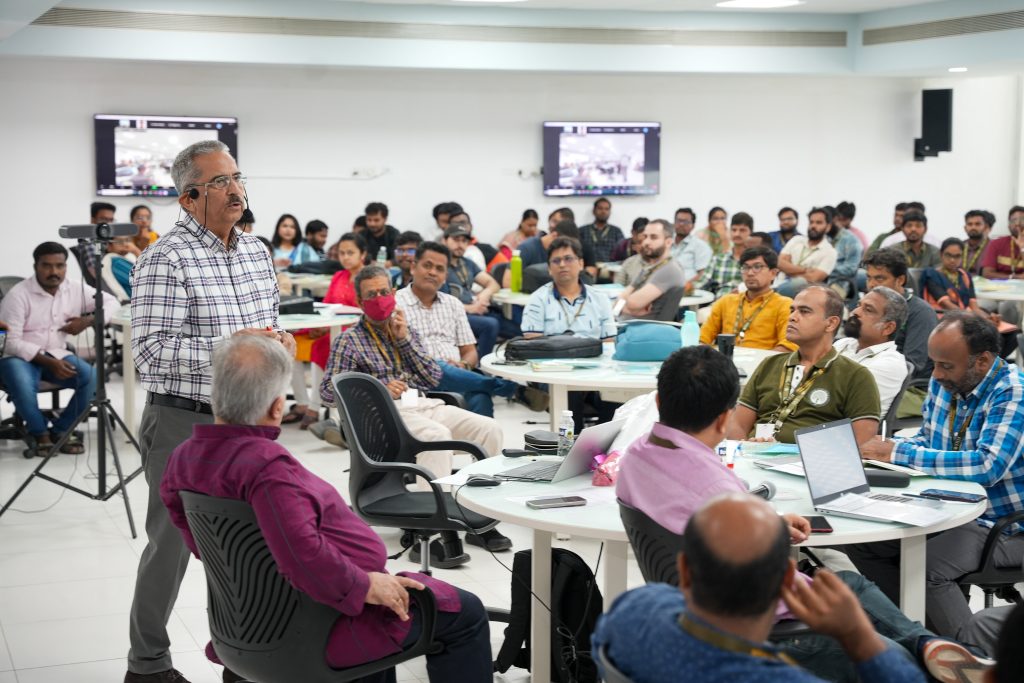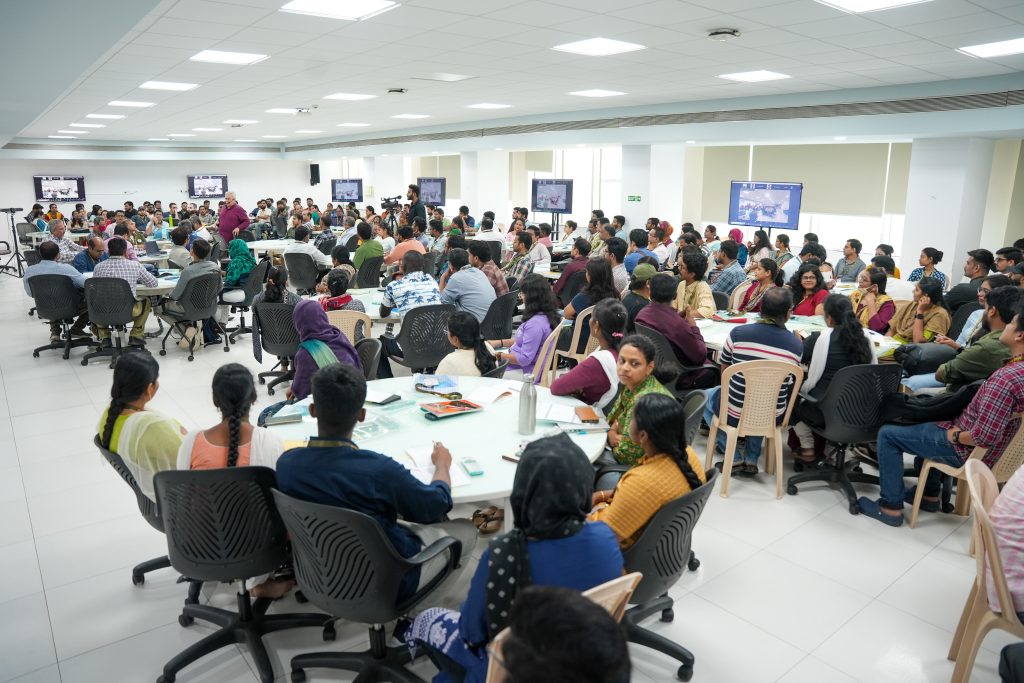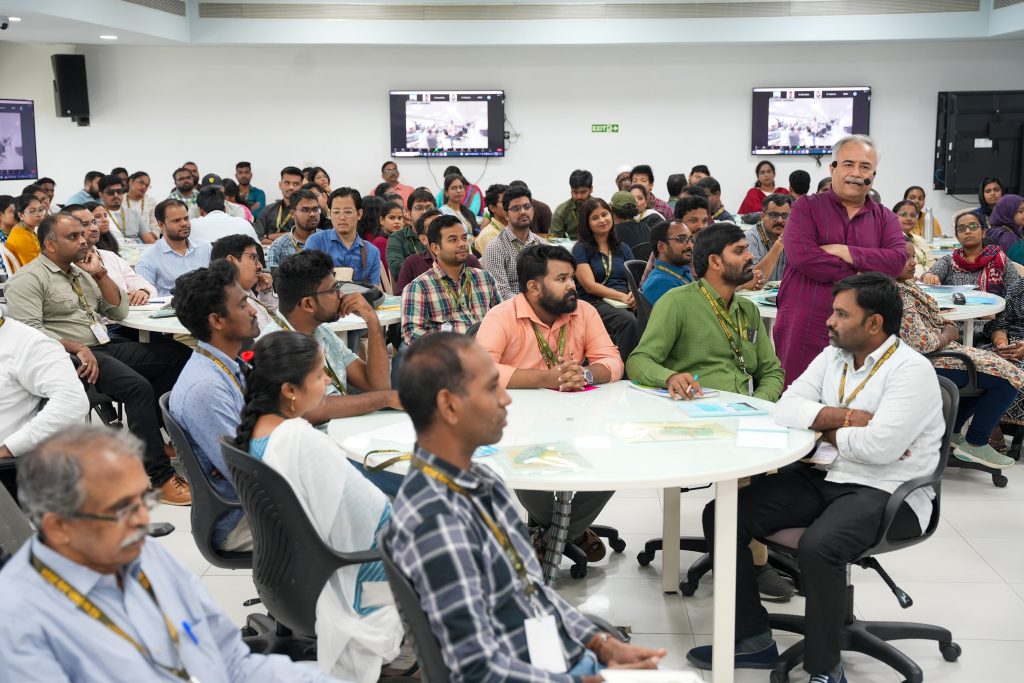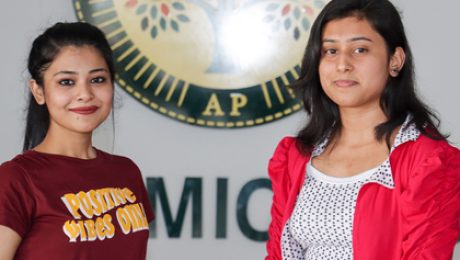Research to Revenue: 3-day Workshop Concludes
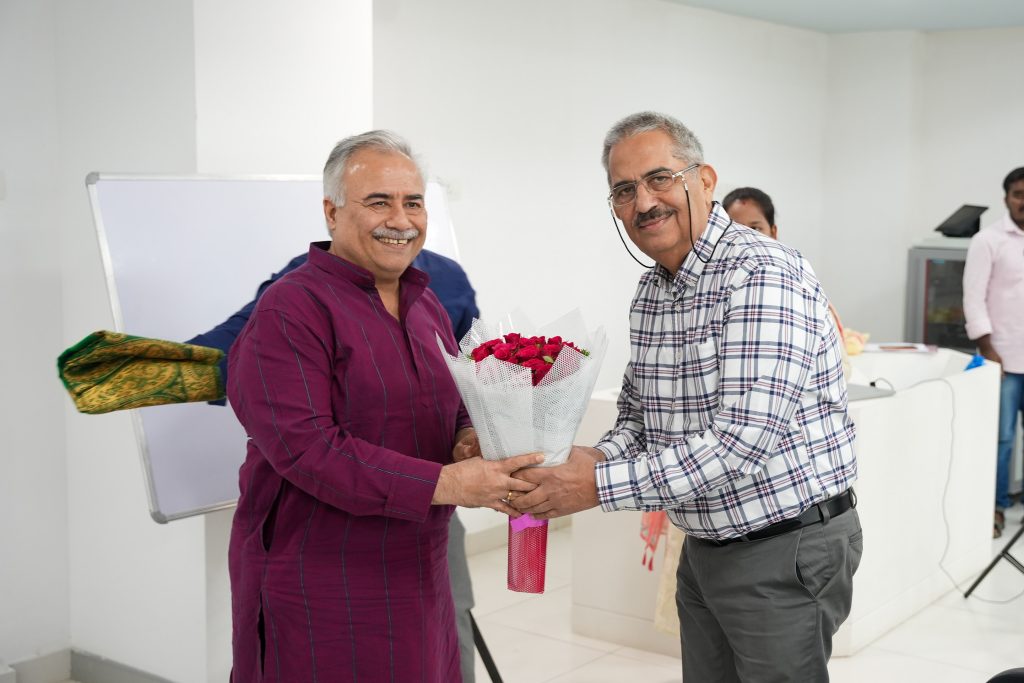 The Office of the Dean-Research and IPR Cell at SRM University-AP hosted a highly impactful 3-day Workshop on “Research Commercialisation.” The workshop was graced by industry expert Mr Rakesh Sharma, a leading figure in business restructuring and global marketing. Mr Sharma with his notable experience of 38 years at Philips, imparted valuable insights on innovation, venture development, and commercialisation.
The Office of the Dean-Research and IPR Cell at SRM University-AP hosted a highly impactful 3-day Workshop on “Research Commercialisation.” The workshop was graced by industry expert Mr Rakesh Sharma, a leading figure in business restructuring and global marketing. Mr Sharma with his notable experience of 38 years at Philips, imparted valuable insights on innovation, venture development, and commercialisation.
The workshop was attended by faculty and research scholars, all keen on understanding the intricacies of research commercialisation. The inaugural ceremony of the workshop was highlighted by the felicitation of Mr Sharma by the Vice Chancellor, Prof. Manoj K Arora, along with Prof. Ranjit Thapa, Dean—Research; Deans of the three schools; Prof. G S Vinodkumar, Coordinator—IPR Cell & Convenor of this workshop; and other senior faculty members.
In his address, Prof. Manoj K Arora underscored the critical role of research, he urged the attendees to “think differently and change your mindset to unlock the boundless potential of your research and innovation.” He engaged with faculty and research scholars, seeking their perspectives. Prof. Ranjith Thapa, the Dean of Research, presented an overview of the varsity’s research capabilities, spotlighting its achievements in Q1 publications and patents across different departments.
Day 1– The workshop kicked off with Mr Sharma encouraging participants to voice their queries and concerns about commercialisation. Key discussion points covered included linking university research with practical applications, the transformation of patents and research into industry-ready products, understanding market needs, fundraising for research projects, and leveraging humanities and liberal arts in patent implementation. Mr Sharma engaged with each of the queries and closely explained to the students with simple and easy-to-understand examples, thereby making the session worthwhile and interesting.
Day 2—Scholars had the opportunity to present their published and granted patents. They received constructive feedback from faculty and Mr Sharma and understood how these patents could be further developed for commercialisation, thereby leading to fruitful discussions on improving and materialising these ideas.
Day 3– A significant outcome of the workshop was the proposal to establish a new centre for research commercialisation designed to offer students an in-house pathway to commercialise their patents. This initiative received widespread acclaim from all participants and sparked engaging discussions about transforming research into viable business ventures, facilitated by the session by the Director of Entrepreneurship and Innovation, Mr Sidharth Shankar Tripathy.
The workshop offered a crucial platform for students, offering both inspiration and guidance in their pursuit of entrepreneurship. The event was specifically designed for all PhD Scholars who are currently working on their research papers and looking for ways to commercialise their innovative ideas, projects, or inventions.
Through a series of expert-led sessions, interactive discussions, and networking opportunities, students were encouraged to think critically about their project’s potential impact, market readiness, and the pathways to achieving sustainable business growth.
- Published in News, Research, Research News, Research Workshop, Workshop
ECE department of SRMAP’s work around high
“application factor” of batteries
Dr Sujith Kalluri
“Research: The distance between an idea and its realisation,” said the powerhouse of 20th-century mass media, David Sarnoff. The present might be filled with ideas, but it’s only quality research that will take them to their logical conclusion in the future. At SRM University AP the focus on research is manifold. The University is forging stronger relationships with the industry to promote research that is high on application in the real world. It also strives to inculcate research bent of mind amongst students through their active involvement in projects.
Dr Sujith Kalluri, Assistant Professor, Department of Electronics and Communication Engineering at the University, is part of one such project. The Venus International Foundation – Young Scientist Award winner 2017 is part of six-faculty team that is working on interdisciplinary research on Battery Technology, from the science to project development. The project has already attracted industry interest and offers brilliant exposure to students involved. The passionate researcher talks about his project and other initiatives at the University.
Charged about the project
Dr Kalluri’s research interest lies in Rechargeable Batteries, and Electronic Testing and advanced diagnostics of Lithium-Ion Batteries. He is grateful for the support of the leadership at the university, which has resulted in SRM-Amaraja Center for Energy Storage devices. “Our key objectives include fast charging technology in Lithium-Ion Batteries which enables fast charging of Electric vehicles. We also aim at implementing the additive manufacturing technology in the large scale production of battery electrodes,” he says looking ahead.
Research with high “application factor.”
Dr Kalluri reveals that the project being conducted at the University hopes to inspire manufacturing of large production of battery electrodes so that the industry can easily meet the demand for the Lithium-Ion batteries. “The goal would be to reduce the charging times for our Smart Phones and Electric Vehicles. So the research has tangible implications for these industries. Another aspect is the concern about Lithium resource around the globe. So we have to look at alternatives that are competitive with Lithium-Ion batteries,” he says.
The merits of interdisciplinary research
One of the highlights of the research project at SRM University AP is its multidisciplinary nature. It involves six faculty members from different engineering backgrounds, Physics and Chemistry. Dr Kalluri asserts that the expertise they bring to the table creates an enriching environment for research. “The faculty pool and resources give us perspective and direction. India has set a goal of at least 20% electric vehicles by 2030, so that gave us the motivation. Amaraja Batteries Limited have visited us several times and offered positive response,” he speaks of the impact.
Student involvement in research
Dr Kalluri states that they are currently in the process of recruiting PhD scholars, researchers and technicians for the centre. They also have a plan to recruit undergraduate and postgraduate students for the project. “They will be involved in R&D while researchers and faculty members focus on product development. Thus they will get first-hand insights into how research is done as well as how a product is developed. We also have an Undergraduate Research Program where students complete projects under the guidance of faculty mentors,” he explains.
Research-driven University
The prototype of Electric Vehicle, Bio-Medical analysis of MRI scans, Centre of Excellence in VLSI Design; the list of research projects at the University is endless. Dr Kalluri reminds us that their mission is to conduct research that addresses societal problems locally and globally. “Amaravati is planned to be a Smart City. All smart cities have a Smart Pole, which is completely Wi-Fi enabled. Our EC department is involved in developing the project, and the prototype has already been shown to APCRDA Department,” he says enthusiastically.
It’s this zest for research, to meet the demands of the evolving world around us, and the strong backing from the university that is nurturing future researchers. Strong Active Learning program, weekend labs to offer students ample time and exposure, and guidance of faculty members like Dr Kalluri helps students imbibe research skills and drive that can shape the future.
Prof. C. Durga Rao brings his crucial research to SRM University, AP and tells us why it will be a hub of worldwide R&D facilities
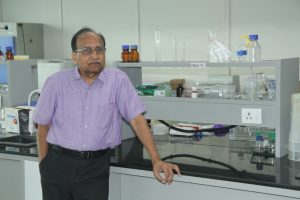 The fact that academics in the country are responsible for staggering amounts of research is well known. But it’s not very often that you come face to face with someone involved with life-saving medical research. Prof. C. Durga Rao has been a part of the team responsible for the development of Indian Rotavirus Vaccine. During his long stint with Indian Institute of Science, he worked on childhood viral diseases, primarily Rotavirus, and Enteroviruses, which are related to Polio Virus. Now he is setting up the laboratory at SRM University, AP to continue the vital work while helping students imbibe crucial research skills. What’s the progress? Read on.
The fact that academics in the country are responsible for staggering amounts of research is well known. But it’s not very often that you come face to face with someone involved with life-saving medical research. Prof. C. Durga Rao has been a part of the team responsible for the development of Indian Rotavirus Vaccine. During his long stint with Indian Institute of Science, he worked on childhood viral diseases, primarily Rotavirus, and Enteroviruses, which are related to Polio Virus. Now he is setting up the laboratory at SRM University, AP to continue the vital work while helping students imbibe crucial research skills. What’s the progress? Read on.
Bringing it home
As part of the team at the prestigious Indian Institute of Science, Prof. Rao played a crucial role in the development of the first indigenous viral vaccine developed and produced in India. He asserts that he joined SRM University, AP because it offered him an opportunity to continue with his research. “The administration is supportive and determined to develop the University as a research-oriented institution. I am sure that the coming years are going to be very significant for the R&D of the university. Though we are a new organization, the intellectuals gathered at the university are exceptional,” he says enthusiastically.
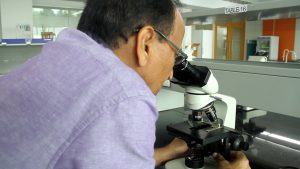 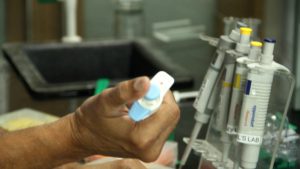 |
Multidisciplinary model, multidisciplinary talent
Dr Rao’s enthusiasm, high energy are befitting of a researcher bursting with ideas, looking forward to making his University a significant contributor among worldwide R&D facilities. Given the multidisciplinary nature of studies and collaborations at SRM University-AP, he is also excited about working with researchers who are experts in fields like Nanotechnology, Gerontology and more. “But since we are working on the multidisciplinary and interdisciplinary models, mostly I have engineering students. So making Biology interesting to them is crucial,” he speaks of translating his passion onto his students.
Encouraging future researchers and thinkers
Dr Rao reveals that at SRM University, AP the focus is on the active participation of students. They are encouraged to ask questions and get marks for it towards their annual grading. The idea is to increase engagement that results in their all-round intellectual development. “In my biology class, we go from how life evolved to the latest advancements in the field. We also teach Data Analysis in Biology, which is an amalgamation of latest Data Analysis technologies with the standard practices of Biology. We want to keep things relatable and stimulating to help students apply their minds and be successful in careers they choose,” he spells out the long term goal.
Lithium ion batteries research a nobel cause_MPS
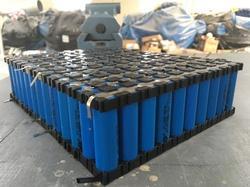
Lithium-ion Batteries Research: A Nobel Cause
If the portable electronics industry has revolutionised the way we communicate today, then we have a lot to thank Lithium-ion Batteries for providing the building blocks. These humble batteries have powered this high tech revolution. It’s probably why Lithium-ion Batteries are rated as one of the most influential pieces of materials science that impact modern life. So when John B Goodenough, University of Texas at Austin, M Stanley Whittingham, Binghamton University, and Akira Yoshino, Meijo University, were announced as Nobel Prize winners in Chemistry for their work on Lithium-ion Batteries, it was a seen as a recognition long overdue.
Long-standing impact
After Royal Swedish Academy of Sciences in Stockholm announced the distinguished winners of the richly deserved awards it said in a statement, “Lithium-ion Batteries have laid the foundation of a wireless, fossil-fuel-free society, and are of the greatest benefit to humankind.” They have been the bedrock for the modern technology-driven world we live. It’s interesting to note that Lithium-ion Batteries have been around for three decades. While mobile technology has gone through a dramatic change only in the past few years, battery technology hasn’t bettered Lithium-ion Batteries for 30 years. That shows you what a powerhouse of a discovery it has been.
Research background
It was in the 1970s that M Stanley Whittingham began the work to overcome the drawbacks of earlier rechargeable batteries, mostly the amount of energy they could store. Lithium’s properties made it an ideal material for the batteries. His first Lithium Battery was also developed in a bid to promote and look for fossil-free energy solutions. However, the batteries ran the risk of exploding, which is why he added Aluminum to Lithium in the anode of the battery. John B Goodenough used Cobalt Oxide for Cathode and it instantly doubled the battery voltage. Akira Yoshino used the technology to create the first commercial battery in 1985.
Changing the future forever
John B Goodenough aged 97 is the oldest Nobel Laureate ever. According to him, when he started his work on Lithium-ion Batteries, he couldn’t imagine the impact they would have. “I didn’t know what electrical engineers would do with the battery. I really didn’t anticipate cellphones, camcorders and everything else,” he said in an interview. But the fact is that today they are at the heart of several modern technologies, from mobile phones and laptops to electric cars. Since Lithium-ion Batteries hold the electric charge longer, they have intrinsically enhanced the viability of electric cars that will be the need of the future.
Lithium-ion Batteries have broadened the spectrum of sustainable energy resources. That’s because they are capable of storing energy from the Sun, Wind and more. These renewable resources will be expected to power our planet’s future. And Lithium-ion Batteries will be making it possible, thus sustaining our tomorrow.
SRM University-AP has set up Amara Raja Center for Energy Storage Devices in collaboration with the Amara Raja Group. The center is fueling the advanced research on Li-ion and beyond Li-ion batteries that aims to revolutionize the world in upcoming years. Ultra-fast charging of devices, new materials for energy storage devices, more efficient batteries and even more R&D are being carried at the center.
At SRM University- AP, we realise the need for research for making the world a better place and we strive to make it happen, for us and for you!
Agniswar Paul’s Pursuit of Excellence at SRM University, AP
It is said that excellence is the gradual result of always striving to do better than before. That means it is a journey, and there is no overnight success and no short cuts to excellence. Agniswar Paul’s pathway to excellence has found a new direction since he joined SRM University, AP. Agniswar is a 3rd-year Electronics Communication Engineering Undergrad student at SRM AP and has been working on research and developing technologies that can help people in meaningful ways.
Agniswar states that prior to joining SRM University, AP he had no exposure to technology or programming experience at all but had a vision in mind that he wanted to make himself capable enough to achieve his career goals. With this objective, he has been working relentlessly on building his skill sets through his course work and his experience at the Next Tech Lab. His focus is on using the Internet of Things (IoT) to develop solutions relevant to society. He regards the founders of Next Tech Lab Anshuman Pandey and Aditya as his mentors who have guided him continuously on the abilities he needs to develop to make the most of working at the Lab.
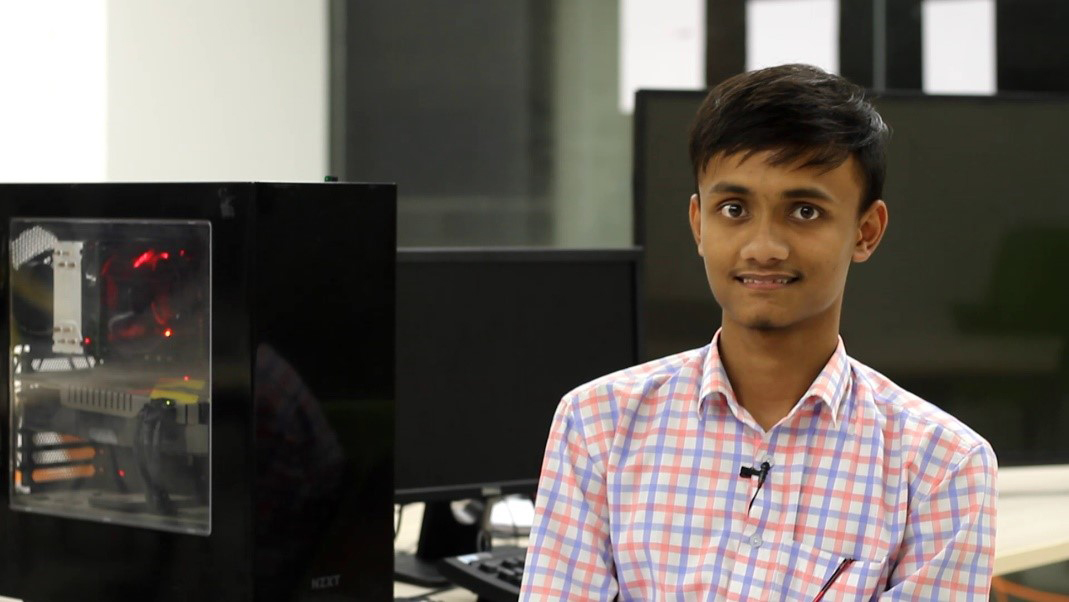
The first project Agniswar worked on was Plant Coin. In this exciting and socially relevant project, he helped develop a product wherein sensors detect whether a particular plant requires to be watered. When this point is triggered, 10 registered users simultaneously receive an SMS on their mobile phones. The person who waters the plant first gets reward points, thus gamifying the simple task of watering plants. The plan is to scale this to a level where people get more involved with caring for plants and trees, which would immensely benefit the environment.
His next stop was a project to help farmers. Almost 2/3rd of the Indian population is dependent on agriculture, and most of this workforce is marginalised farmers who can use all the help they can get from technology. Alongside 3 other Lab members, Agniswar initiated a project that would reduce the uncertainties around weather and water management for farmers, thus improving their ability to plan as well as meet untoward developments. Timely information about the weather and related matters was a vital element of this solution. Working on this project for 5 months led to getting the product ready, and they are writing a research paper on it. The article got accepted for publication in the IEEE Journal, one of the world’s largest technical professional organisation dedicated to advancing technology. The publication was not a modest achievement. IEEE has a very rigorous screening process with reviews by 10-15 members who score the submissions between -3 to 3. If the paper is accepted, then it is presented by the authors at a research conference. Agniswar’s team presented the paper at a conference in IIT Kanpur in July 2019, which he counts as excellent exposure.
Not one to rest on his laurels, Agniswar published a second paper, which was accepted in September 2019, for which he attended a research conference in November 2019 in Singapore. This paper wrote on the intelligence of robotics. Currently, he is working on his third research paper which involves combing IoT with augmented reality. The fusion of IoT & augmented reality promises to be immensely helpful for students who use equipment to run experiments.
Besides such projects, Agniswar has participated in 4 Hackathons so far, and his team has won every one of them. These were the Los Angeles Hacks, San Francisco Hacks, Developer Week, and Minerva.
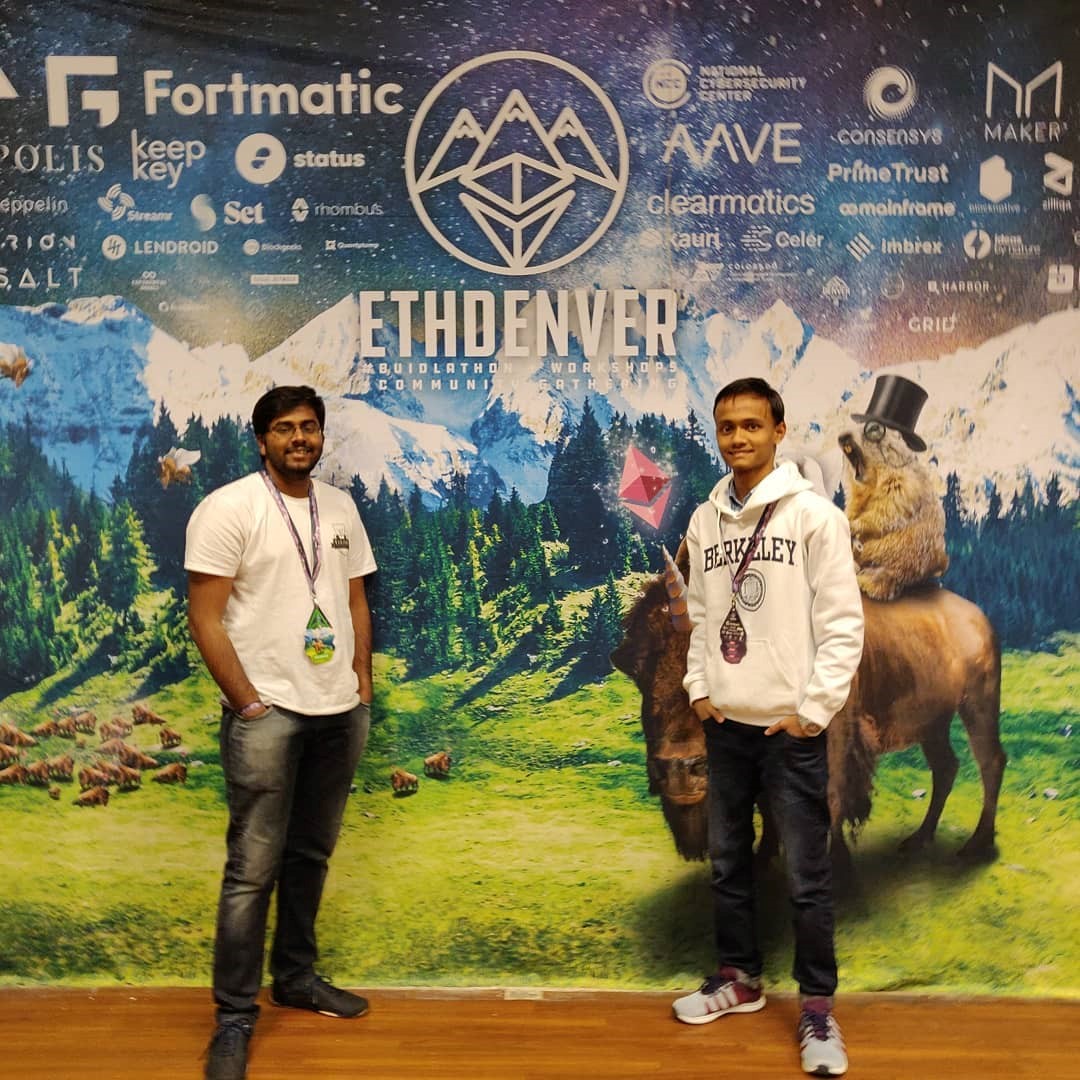
Last semester Agniswar went to the University of California, Berkeley (one of the world’s most renowned technology school) and became a part of Robotics Lab. After a rigorous screening and interviewing process, he was accepted by the lab to work there for three months.
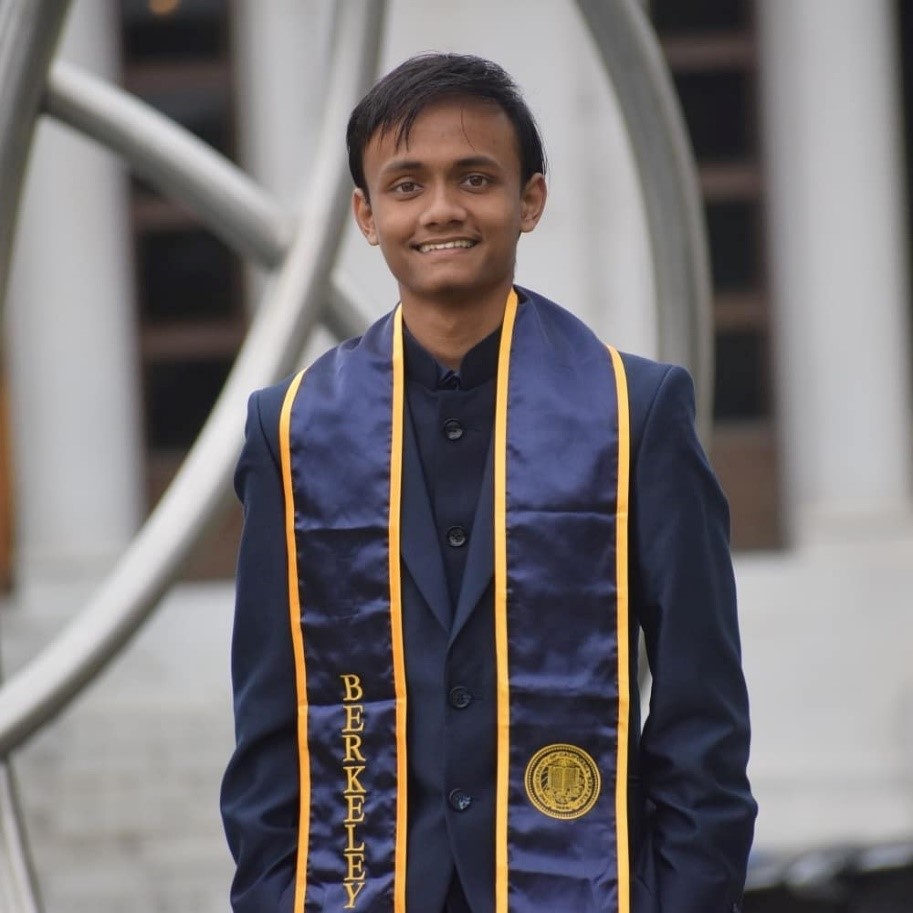
For students like Agniswar who was intent on pursuing research and real-life projects, SRM University, AP offers a conducive environment where students like him can push their limits, gain exposure, and have a real impact. This research focus and encouragement of students like Agniswar make SRM University, AP one of the most dynamic centres for learning for those who want to pursue excellence as a way of life and see their work have a meaningful impact.
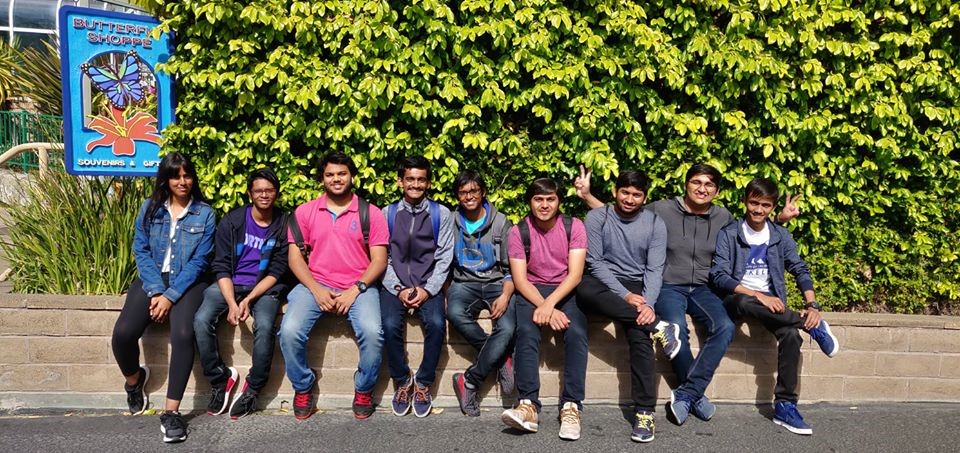
Bennet Benny’s Exciting JAIST Science Internship Journey
One of the key elements of holistic learning is gaining deep and wide exposure at an early stage. This helps students to gain both depth and breadth of knowledge, especially when it comes to international opportunities. SRM University, AP through its tie-ups with international universities of repute provides students with such exposure and also encourage its students to participate in events, conferences, competitions, and internships. One such internship is the Japan Advanced Institute of Science and Technology (JAIST) Minor Research Project / Internship. JAIST is an intensive research institute and was established in 1990. The internship itself is funded by the Japan Science and Technology Agency (JST), a government agency. Through this internship, JAIST works to create leaders capable of contributing to the making of a future world by contributing valuable in science and technology, through its most advanced education and research in an ideal academic environment.
Bennet Benny, a B.Sc. Physics, 2nd Year student at SRM University, AP won the Sakura Internship Program 2019 at JAIST recently. Under the guidance of Prof. Ranjit Thapa, Bennet had applied for the internship in March 2019 and his internship period was between 16th December and 24th December, 2019. Bennet’s focus under the supervision of Prof. Ryo Maezono of JAIST was on electronic structure calculations using DFT and QMC computational methods on one of the supercomputers located at JAIST. Before proceeding to Japan, Bennet was supported by SRM University, AP faculty who recommended books and reading material to familiarise himself with the complex topics that he was going to work on at JAIST.
For Bennet, the internship was an excellent opportunity to learn more deeply about quantum mechanics, which analyses properties of materials at the atomic and subatomic levels. At JAIST, he was joined by five other students from Bandung Institute of Technology, Indonesia and each of the interns was assigned a workplace with a PC at their disposal. For starters, they were then taught the basics of Linux commands and about parallel computing. These skills were later used to run the simulations of Density-functional Theory and Quantum Monte Carlo. The internship helped Bennet to get aware of computational physics, its advantages, uses and the latest research around it. He was especially thrilled about the opportunity to see and be given access to the supercomputers that are housed at JAIST.
More importantly, Bennet counts the opportunity to experience a new and unique culture and to meet and work with people from different nations as a huge source of learning. He got a chance to meet people from different nationalities such as Japan, Indonesia, and China through the course of his internship, which was also his first experience of travelling to a foreign country. Experiencing a new culture and gaining a new perception of education in Japan, he was able to gain the motivation and inspiration to work hard to pursue his higher education and research. Outside of the rigorous internship work, the students were given a guided tour of the beautiful city of Kanazawa, where they visited the Kanazawa castle and the Kenroku-en Gardens, which is known as one of the three perfect gardens of Japan.
Bennet feels the combined experience will be beneficial for his budding career. The opportunity has provided him with the chance to develop many skills that could help him to work in one of the research laboratories at SRM University, AP and also to start the pursuit of his research work. The internship allowed him to gain exposure in a new field and he now intends to implement this learning to his original goal of pursuing a Masters in High Energy Physics. He feels every student should grab all the opportunities that SRM University, AP presents and utilise it rather than dither at the thought of the challenges that come with it.
Strengthening Research Culture
“In much of society, research means to investigate something you do not know or understand. Research is creating new knowledge,” said Neil Armstrong, the first man on the moon. The quest for knowledge creation has consistently pushed researchers and scholars to seek answers to evolving questions. And if there is anything we have learned in the past year, it’s that we are often posed with new challenges that require innovative solutions in today’s world.
The new world has its eyes trained on well-trained researchers, who are problem solvers of tomorrow. Their journey begins at institutions of higher learning, which should not only imbibe research aptitude but also equip them with cutting edge skills to see their projects to logical conclusions. Looking at teaching and research as independent entities can be a considerable loss, and new-age institutions like SRM University-AP are set on avoiding it at any cost.
Research in its DNA
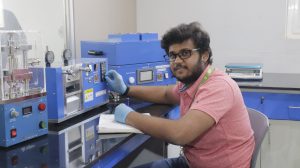 Since its inception, SRM University-AP has been known as a broad-based multidisciplinary research-intensive university. As its Pro-Vice-Chancellor Prof. D. Narayana Rao says, “SRM University-AP provides exciting and challenging research opportunities that are of national and international importance and have social applications.” True to those words, it has developed a lively ecosystem conducive to research, showing the results.
Since its inception, SRM University-AP has been known as a broad-based multidisciplinary research-intensive university. As its Pro-Vice-Chancellor Prof. D. Narayana Rao says, “SRM University-AP provides exciting and challenging research opportunities that are of national and international importance and have social applications.” True to those words, it has developed a lively ecosystem conducive to research, showing the results.
The research focus at the University had drawn around 60 scholars from around the world pursuing their PhDs in their areas of interest. In a short span of time, faculty members and students of the University have published over 200 research papers. In 2019-20 alone, eight patents were published, and 5 were applied for under SRM University-AP. The staggering amount of quality output has caught the eye of aspiring researchers and leading institutions alike.
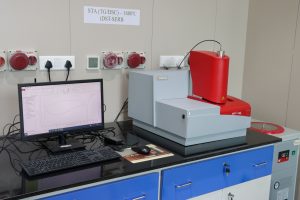
Top names like DST, DBT, BRNS, Government of India and the British Council have sanctioned 24 research projects with a total outlay of Rs. 12.00 crores to faculty members at SRM University-AP. And this seems only the beginning for scholars at the University, who are encouraged by concerted initiatives and growing infrastructure on campus, which has a thriving ecosystem for research pursuits.
- The University has drawn a dynamic pool of faculty members with international exposure. As they work on impactful research, they mentor students and scholars to think creatively and present solutions through projects.
- It is set to create Centres of Excellence on Cloud Computing, Internet of Things (IoT), Artificial Intelligence and Machine Learning, 5G Technologies, Weather Forecast, Satellite Technology, Renewable Energy, Energy Storage Devices, Additive Manufacturing, Gene Editing, and Blue Economy to embrace new technologies.
- Its international collaborations with MIT, the University of California, Berkeley and other renowned foreign universities offer students opportunities to interact with and collaborate with peers and academicians worldwide.
- SRM University-AP has also focused on industry collaborations with powerhouses like TITAN, Amara Raja Batteries Limited (ARBL) for joint research. In fact, it is working with Indian Railways to develop hydrogen-powered fuel cell-based trains.
These and other projects in the pipeline can no doubt have an impact on society. But at the same time, shaping future knowledge creators and problem solvers will be a significant achievement stemming from the research culture on the SRM University-AP campus.
Journey of Dr Manjula R towards Privacy in Wireless Sensor Networks
Anecdote:
“Since my school days, I have been fascinated by writing cryptic text, though intelligible. It all started with mirror-writing the teaching-feedback that was requested by our class teacher Tr. Jezuine. Once the feedback was read, the teacher called me and asked: “How did you learn this?” I was on cloud nine and replied, “it just happened only for you”, with a massive smile on my face. Later, I never thought of any secret writing for a while. It was only during the initial days of my teaching profession; I had the opportunity to read my classmate’s notes scribbled in a cryptic text which triggered further enthusiasm in me. So, during my postgraduate course, I started reading and presenting seminars on Cryptography and Security. This further led to deeper digging into the core of security aspects that also led to a trivial postgraduate project on key-establishment in wireless sensor networks. Later during the research period, I chose a new upcoming area – wireless sensor networks (broader domain), and contextual- and content- privacy (narrower domain) – privacy preservation in WSNs as my research topic.”
-Dr Manjula R
The Issue:
The significance: The privacy of individuals is being compromised gradually with the increasing popularity and rapid deployment of pervasive computing technologies. The benefits and conveniences offered by modern devices often lead people to neglect the dire consequences of possible privacy violations. Therefore, privacy risks should be taken into considerations while designing responsible technologies. One such technology that poses serious privacy risks is the Wireless Sensor Networks (WSNs). Despite the enormous benefits offered by WSNs to humanity, several issues need meticulous attention. Security and privacy are such issues in WSNs. For instance, the US military aims to adopt Internet of Things (IoT) enabled WSN. The usage of WSNs, Unmanned Aerial Vehicles (UAVs), tiny robots (nanoscale robots) are envisioned to transform the battlefield scenario. In particular, these digital devices and components are embedded in soldiers’ uniforms to collect the health status of the worriers and relay this information to a central controller, named the base station (BS). The BS is located near places where the internet is easily accessible. Nevertheless, WSNs are deployed in areas where it is challenging to have internet. However, this problem is easily solved with the amalgamation of WSNs and IoT. This comes with unwelcoming consequences. The unattended nature of these networks provides an attacker with physical access to the devices. The attacker may compromise the node and conduct illegal activities, say, mimic fake chemical leakages etc. Furthermore, the broadcast nature of the transmission medium gives access to the packets exchanged by the sensor nodes to anyone within the communication range. Consequently, adversaries may exploit these features of WSNs in order to launch attacks against the network and thus render all the potential benefits offered by this technology unusable. Hence, privacy preservation in WSNs is a significant issue that needs to be addressed to safeguard personal and private assets—soldiers or endangered animals etc.
In a quest to provide countermeasures to such attacks, Dr Manjula R and her team are developing privacy preserved solutions with particular emphasis on routing in WSNs. Their recent research article titled “Protecting Source Location Privacy in IoT Enabled Wireless Sensor Networks: The Case of Multiple Assets” has been accepted for publication in a peer-reviewed journal – IEEE Internet of Things Journals. This work is co-authored by Prof. Raja Datta, IIT Kharagpur and Mr Tejodbhav Koduru (studying in 5th semester in dept. of CSE, SRM University AP). The SCI-indexed journal has an impact factor of 9. 396. The team is also focusing on the development of new countermeasures to mitigate eavesdropping attacks in WSNs.
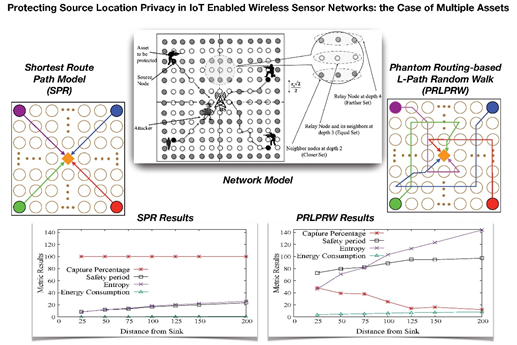
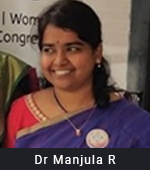
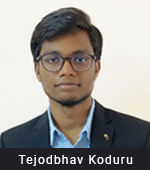
CSE students grab the coveted MITACS Globalink Research Internship
“When you want something, all the universe conspires in helping you to achieve it”– Paulo Coelho.
Be it a dream or a wish, when you are determined to pursue what the mind really wants, SRM University-AP helps you reach that goal. Ms Pragya Gupta and Ms Swikriti Khadke joined SRM AP with vibrant dreams, and in their third year, they have attained the prestigious Mitacs Globalink Research Internship. The students from the Department of Computer Science and Engineering will spend three months in Canadian universities as a part of this fully-funded research internship. Ms Swikriti will intern at Université du Québec en Outaouais – Gatineau on the research project titled “Systematic PV farm power losses calculation and modelling using computational intelligence techniques”. Ms Pragya will be going to Athabasca University – Edmonton as a research intern to work on the project titled “Blockchains for Data Storage and Mining in Learning Analytics”.
About Mitacs Globalink Research Internship
Mitacs Globalink Research Internship is a highly competitive programme that pairs top-ranked international students having specific research expertise from 15 countries worldwide with faculty at top Canadian academic institutions. This is a twelve (12) week research project of mutual interest between May and October 2022. The Canadian host faculty project leader makes selections by verifying the student’s background and skills in the research area and the unique contribution they will be made to the research during the stay. As a fully-funded programme, Mitacs and AICTE will administer the grant. Students can choose from about 14k+ projects in disciplines like Engineering, Life Sciences, Mathematics, Natural Sciences, Social Sciences, and the Humanities.
Mitacs will be responsible for providing the following to the students:
1. An airfare stipend of Can$1,500;
2. A stipend of Can$175 to contribute to the cost of transportation from the Canadian airport to accommodation unless otherwise arranged by your host institution
3. A stipend of Can$200 per week for living expenses
4. Ensure that students receive Canadian medical insurance.
5. A daily allowance of Can$45 for housing for the duration of the research internship.
6. A stipend of Can$300 for any student fees charged by the Canadian host institution
7. Reimbursement of immigration permit application fees (as required to participate in the research internship — up to a maximum of Can$240)
8. A stipend of Can$500 for any COVID-19-related expenses (e.g., COVID test, quarantine, expenses incurred during isolation, etc.)
The journey, in Pragya and Swikriti’s words:
The journey from applying for MITACS to getting selected as one of the GRI interns in one of the top-ranked universities in Canada was no less than a dream come true. The registration process included filling out an application form which was the most important step and a complicated one. This was also an elimination stage for many because writing down all our details in a limited number of words was quite difficult and challenging. After submitting the application form, the details about the Matching round were intimated in November. We received emails for the interview round from the professor himself. It was a technical interview that comprised of questions regarding our work experience, knowledge about the technology we will be contributing to the project during the internship, and personal details. The interview lasted for 30-45 mins, after which the professor assigned us some tasks to assess our knowledge regarding the topic. After completing and submitting the task, around Mid December, we received a congratulatory mail regarding our selection for MITACS GRI 2022, which will commence from May 2022 and continue for the next three months.
The Globalink Graduate Fellowship offers former Globalink research interns:
■ Direct financial support from Mitacs
■ Recognition as Globalink alumni
■ The opportunity to work with Canada’s research supervisors during your graduate studies
■ Additional exposure to the Canadian research and innovation landscape and increased Canadian experience.
A note of gratitude
“We would like to thank SRM University-AP, Andhra Pradesh, for helping us build our skills and supporting us throughout the process. Our university management has always been kind and helpful to its students to explore new opportunities and create new relations. We would like to extend our gratitude to our mentors, Dr Goutam Kumar Dalapati and Dr Anil K Suresh, for their continuous support, guidance, and motivation. Last but not least, our parents have been our support system throughout our journey”.
- Published in Blog, CSE NEWS, Departmental News, News, Research, Students Achievements
Do you think CSIR-JRF is a tough nut to crack? Persistence is the key
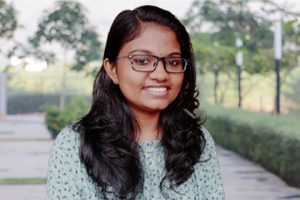
“Believe you can and you’re halfway there.” – Theodore Roosevelt
Jesni M Jacob, currently doing research under Dr Mahesh Kumar Ravva narrates her journey to achieving CSIR-JRF All India Rank of 65 through persistent efforts.
I’m working in the field of computational chemistry on designing and developing organic molecules for OLED applications. Securing an AIR of 65 in the CSIR JRF in Chemical Science June 2021 exam is a dream come true moment for me.
In 2019, I completed my post-graduate studies at Madras Christian College, Chennai. The four-year-long journey from zero to JRF AIR 65 was of hard work, patience, sleepless nights, sacrifices and even frustrated moments. It was challenging to remain motivated after multiple unsuccessful attempts. But I wasn’t ready to give up hope. I believed in myself and dreamed big with faith in God Almighty.
My previous attempts didn’t provide me with any hope of continuing my preparation because my marks were consistently far below the cutoffs. That made me realise one thing: without coaching and ample guidance, qualifying for CSIR JRF is a toiling task for an average student. But I learned that with strong passion, proper dedication, and right strategies of do’s and don’ts, any aspiring student can pass the exam with flying colours.
After each attempt, I learned from my mistakes and tried to optimise my strategies. One should never try to cover the entire syllabus and be bothered about it. I analysed the unit-wise weightage and narrowed it down to a few important topics that I found exciting and comfortable.
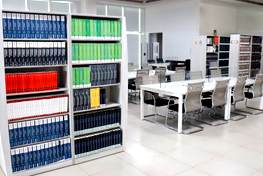
- Choose topics carefully and focus solely on mastering them.
- Try to stick to and rely on reliable standard textbooks as much as possible.
- The SRMAP library provided me with excellent access to a wide range of standard texts.
The JRF aspirants should try to solve previous years’ questions from standard exams (CSIR, GATE, IISc, etc.) and note new concepts or approaches every day. Enjoy and prepare short notes with a lot of scribbling and highlighting in various colours. Notes should be concise and simple to revise later. But don’t spend too much time making notes.
I made time for exam preparation along with my work and research activities. I’m grateful to my family, teachers, and especially my guide- Dr Mahesh Kumar Ravva, for their constant support and encouragement. He gave me a safe space to express my desire to ace the exam and my anxieties about it. Dr Mahesh always listened to my concerns and helped me to gain clarity on my thoughts. He always encouraged me to dream big and shared his perspectives and lessons from his life experiences. He is a great mentor, motivator, and teacher to me.
- Published in Blog, Chemistry-news, Departmental News, News, Research, Students Achievements
- 1
- 2



